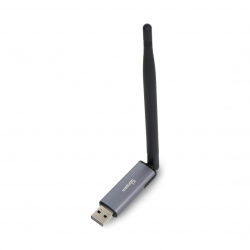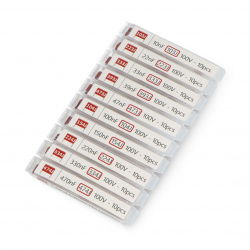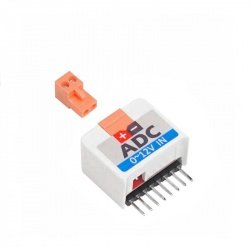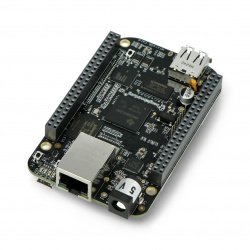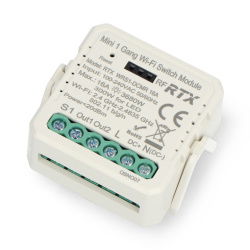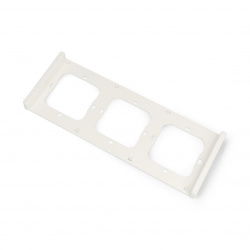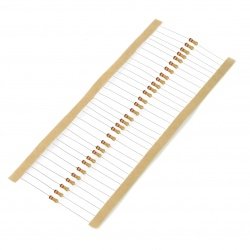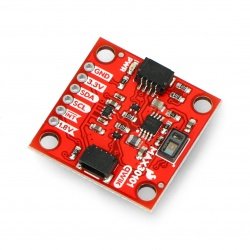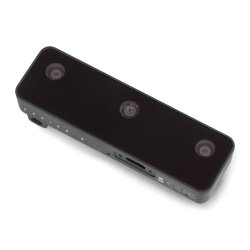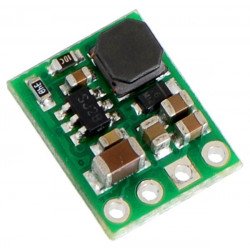Until recently, learning electronics meant experimenting with contact boards, having to run wires, and planning the layout of components yourself. For beginners it was not easy at all. Nowadays, students of modern technology can benefit from a wide range of educational robots, as well as well-prepared kits - such as LittleBits. Don't let the bright colors fool you: this solution is equally suitable for children, teenagers and even adult users.
LittleBits
See also
- 2-core cables
- Power supplies 12v 10a
- Conductive paint
- DJI Mavic drones
- Zortrax Filaments
- DJI Inspire drones
- 24v relays
- Anet 3D printers
- Wireless mice
- Esperanza compressed air
- Outdoor LED lighting
- Syma drones
- Fluorescent filament
- DJI Phantom drones
- Hexbug toys
- Magnetic balls
- DJI Mavic drones - drones and accessories
- Compressed air to clean the keyboard
- Tablets
- RPi Wi-Fi cards
- PLA Pro filaments
- Encoders
- Intel modules & kits
- Intel starter kits
- Android Box Smart TV
- 2D printers and pens
- Banana Pi
- Photo traps
- Smart ABS filaments
- Headphones
- Intel expansions & hats
- GPS trackers
- Resistors SMD 1206
- Aqara - home automation
- STM32 books
- Books about Raspberry Pi
- Chargers
- Dobot 3D printers
- String bags (zip bags)
- Vacuum forming
- Intel - module accessories
- Refill filaments
- BeagleBone power supply
- Car handles
- Electrolytic capacitors SMD
- AGM batteries
- Tantalum capacitors SMD
- Sensors and alarms
- Alarm sirens
- Flsun 3D printers
- Doorbells and peepholes
- Arylic sound modules
- Flexible filaments
- Khadas VIM
- Motor capacitors
- RC cars and models
- Laminators
- Zortrax 3D printers
- Control equipment
- Linear actuators
- Trilab 3D printers
- Bluetooth Speakers
- Goofoo 3D printers
- PowerBank mobile batteries
- Webcams
- Urbicum 3D printers
- LED lighting
- Spare parts
- ATMAT 3D printers
- Mycusini 3D printers
- TinkerGen
- Weight meters
- Raspberry Pi 2B+
- DJI educational robots
- Makeblock 3D printers
- Transport cases
- Orange Pi
- MakerPi 3D printers
- Silk Filaments
- Sparky
- Abilix Krypton
- 3D printer Artillery
- Air conditioning and heating
- Gas soldering irons
- Air purifiers
- SkriWare - educational robots
- Exta Free - sensors and modules
- Spresense Sony
- Netronix RFID modules
- Rock Pi
- AST lighting drivers
- CubieBoard
- WowWee
- Coolseer home automation
- AMK - automation and control
- Smartwatches
The study in nature (i.e. without wires)
Learning electronics with LittleBits allows you to get straight to the point - connecting specific modules (known as 'bits') to perform specific functions. This is somewhat reminiscent of the principles already explored in educational robots for children, except that in LittleBits the result is not a mobile device but an electronic circuit that performs a specific function. This idea, by the way, perfectly reflects the work of a modern electronics engineer, whose job is often not to design entire circuits from scratch, but to skilfully use available components and tools to connect and encapsulate them according to an individual concept. The bits that make up the LittleBits kits are, of course, much simpler. They are connected by magnets built into the sides of the modules, so it is enough to touch two modules to make them work together. There's no need to run wires, design and etch circuit boards, or even learn the circuit layout of prototype boards. The connected bits establish communication instantly.
Impressive abilities in small cups
The basic element of LittleBits is the Mounting Boards. Among the bits included in the kits you will also find an Arduino-compatible bit created with prototyping in mind, an Arduino-compatible MakeyMakey bit module turning any object into a controller or a kit supporting touch control. An interesting idea are bits created with a view to integrating modules with the Internet - including both IoT and popular social networks. And LittleBits kits for learning programming can successfully compete with educational robots in terms of attractiveness for users. Let's also emphasize that the LittleBits developers have taken care to embed their modules in a reality that is real and close to children - e.g. the touch control kit is a funny reference to the alarm system protecting the little inventor's personal belongings.
State-of-the-art kits for schools
The creators of LittleBits take their educational mission very seriously. The best proof of this is the creation of educational kits for schools. And not a single suitcase of building blocks, but, for example, a full suite with kits that can be worked on by 30 students at a time. The largest kit available for schools, the Pro Library w/ Storage, includes an impressive collection of over 300 bits and more than 220 accessories to provide instruction for a larger group of participants.































































































































































































































































































































